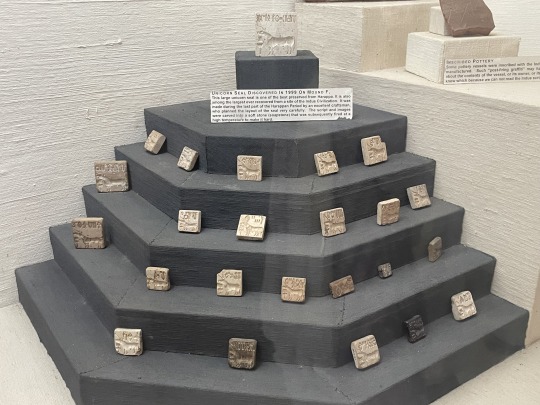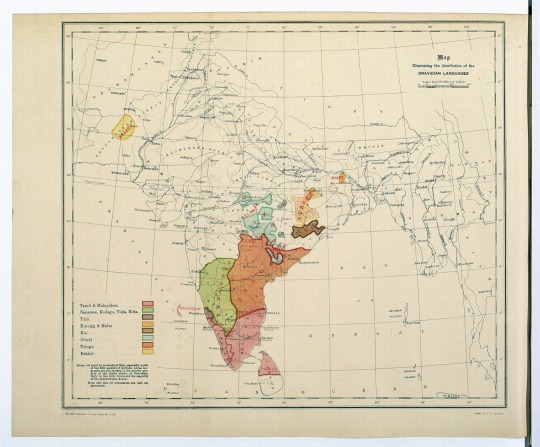#Harappa
Text
Unicorn symbolism was of profound influence in the oldest of cultures - Sumer, Assyria, Babylon, Persia and ancient India. From seals, friezes, and royal regalia, they reveal the profound impact these creatures had on the collective imagination of these ancient cultures.
51 notes
·
View notes
Text

#Indus Valley Civilization#unicorn seal#ox seal#Harappa Museum#Harappa#Sahiwal#Punjab#Pakistan#stamps
2 notes
·
View notes
Text

May I offer this Harappan figure of a squirrel eating fruit for this Faience Friday?
18 notes
·
View notes
Text

Mohenjo Daro fans rise up
#historical memes#history#history memes#meme#memes#ancient history#historical#indus#indus River#indus river valley#indus river valley civilization#mohenjo daro#Harappa#ancient civilizations
19 notes
·
View notes
Text
TIL Bŗihaspathi, Brahmaņaspathi and Brahma were the three major gods of Rig-Veda and not Trimurti of Shiva-Vishnu-Brahma who we consider today as major deities. Later were minor gods in Vedas who were elevated when Puranas were written. They were given more powers, virtues and functions in respective Puranas.
Why might this be? While I don't have the answer, here's something to speculate.
Vedas, considered oldest Hindu texts were written by people who traveled to India from European (central Asian) regions. Were there people in India already?
Yes. Harappan civilization had long ended. Indus Valley Civilization started declining with arrival of Vedic migrants. Here's something more interesting.
Shiva as he is seen today was already present in Harappan civilization. Yes, Shiva was here (with people) long before Vedic people arrived here. So it is highly likely (in fact many historians have already said this) that Shiva and so many other gods (almost all that we worship today) were assimilated into new religion by migrants who arrived here. Coopted. Stories (Puranas) were written in this process. They probably tried to convert natives into their vedic religion. It didn't work. And so they went many steps ahead and instead started calling gods of natives as theirs own. And to support this claim they also wrote stories. A job well done.
Lemme enunciate this further with a recent instance. Last year or a year before that, during Covid, at our annual function of a local deity "Naag Brahmo" who is most times just a god worshipped in form of peepal tree or even a mango and when given form is shown as multi-headed-serpent (sometimes 3, other times 5, 7 too). For some reason someone decided up call people from ISKCON to conduct a bhajan. They arrived. They saw our god who at this place was a five-headed-serpent and slyly told us how this was no ordinary serpent but serpent of lord Vishnu. For the record, we don't consider our god a simple serpent, at times we talk of him with abundant power to move natural elements. But anyways, you get what was happening here.
Why do they do it? My theory is, caste system exists in their world and anyone outside of it is a threat or one less human not under their control. Whatever the reason, fact is, the ancient form of Hindu religion was a religion of migrants and not of natives. While today all of us have traces of Harappa DNA (recent books have abundantly cleared this), ideology is still alien. There's absolutely no reason to be touchy about the religion of migrants. And also tell Mr Amit Shah and company when he calls fellow Indians migrants from here and there. His ancestors, if he thinks he comes from Vedic ancestry, were migrants too.
Finally, just remember how none of the Vedic gods are worshipped by masses today. Gods we pray to were created using Puranas as vessels of their stories. If you think about it then, the only thing that is still practised from Vedic age is caste. So whenever you say your religion is old, sanatan, whenever you try to assert oldest, this is the bit that is oldest and still practised. We all abandoned our old gods but stuck to caste system nonetheless. Caste in that manner was more important to us than even our gods.
3 notes
·
View notes
Photo

“Narasimhan et al. (2019) argue that the ASI component itself formed in the early 2nd millennium BCE from a mixture of a population associated with the Indus Valley civilization and a population resident in peninsular India.[69] They conclude that one of these two groups may have been the source of proto-Dravidian.[70] An Indus valley origin would be consistent with the location of Brahui and with attempts to interpret the Indus script as Dravidian.[70][71] On the other hand, reconstructed Proto-Dravidian terms for flora and fauna provide support for a peninsular Indian origin.[70][72][73]”
#indus valley#tamil#dravidian#meluhha#harappa#mohenjo daro#rakhigarhi#hinduism#buddhism#Sri lanka#south asia#truth#geopolitics#language#map#history
11 notes
·
View notes
Photo

Harappa Civilization, Pakistan: Assam Artist prompted his Imagination through AI. Best visulization so far to imagine the Civilization, people and life 2500 BCE ago. #harappa #punjab #Pakistan #civilization (at Harappa City) https://www.instagram.com/p/CpAjN00s2Ll/?igshid=NGJjMDIxMWI=
2 notes
·
View notes
Quote
Don’t tell me the child of ancient farmers can’t tell agriculture from ecocide; the waaris of Waris Shah poetry from crudity; the heir to Bade Ghulam Ali, Salamat/Nazakat Ali music from travesty; the builder of Harappa, dignified existence, from a rat’s nest; the child of Vaisakhi 1699, true revolution, from lip service. Don’t worry, he’s just tripping, riding out the bad trip. And when he wakes up, everything will be accounted for — the dead, the living, the comatose. Till then, we all play our parts. Shore up your version of Punjabiyat. Look at your kids’ faces. What would you like to pass on to them? Pass that. Whose light do you want them to reflect? Cast that. Which song do you want them to remember you by? Sing that.
Rabbi Shergill, ‘Rhythm of an ominous beat’, Tribune
#Tribune#Rabbi Shergill#India#Punjab#Waris Shah#Bade Ghulam Ali#Salamat Ali#Nazakat Ali#Harappa#Baisakhi 1699#Punjabiyat
11 notes
·
View notes
Text

A street at the ancient city of Harappa in Pakistan. 2500-2000 BCE, Indus Valley Civilisation.
0 notes
Text
youtube
It’s very easy to revise and retain History through solving MCQs. In this series we will try to solve basic questions to revise entire syllabus of History.
0 notes
Text
To what extent has the urban planning and culture in the Indus Valley Civilization provided inputs to the present day urbanization? Discuss.

0 notes
Photo

#dancinggirlofharappa #harappacivilization #harappantools #harappa #harappaartefacts #artefacts #excavation #archaeology #history #civilisation #motog825gshot (at Prince Of Wales Museum) https://www.instagram.com/p/CpqLHFmvsy_/?igshid=NGJjMDIxMWI=
#dancinggirlofharappa#harappacivilization#harappantools#harappa#harappaartefacts#artefacts#excavation#archaeology#history#civilisation#motog825gshot
1 note
·
View note
Text

2 notes
·
View notes
Text
Jacking off to a deepthroat video
Columbiana Office Girl Fuck her self to orgasm
Big boobs blonde shemale big dick
Teen boy gay porns videos Hot scouse fellow Zackarry Starr
Le lleno de leche el culo a la novia de mi amigo
Businessman fucked by tranny in bondage
Cumming hard after edging for so long
Novinha vagabunda no chuveiro
Hung jock receives blowjob and ass fucks his boyfriend
Sabrina Sabrok huge tits goddess smoking and feet fetish
#educative#Tzotzil#Tangut#warmblooded#lightskin#cosmonaut#Zucchero#duraspinalis#Un-fenian#anticommunist#constitutionary#Hirz#smoke-ball#trioxid#Harappa#woman-wary#hyalinosis#interpervasively#overdares#Gekkonidae
0 notes
Photo

Harappa: Aperçu de l'Architecture et de l'Urbanisme Harappéens
Harappa est une petite ville située actuellement dans la province du Punjab au Pakistan. La ville moderne fait partie de l'ancienne cité et se trouve à côté de celle-ci. Le site de Harappa est important dans la mesure où il a fourni des preuves non seulement de la civilisation de la vallée de l'Indus telle qu'elle était à son apogée, mais aussi des cultures précédentes et suivantes, et c'est le seul site inclus dans cette catégorie. L'ancien tracé de la rivière Ravi passe au nord du site, et c'est depuis déplacé de 10 km vers le nord.
Lire la suite...
1 note
·
View note